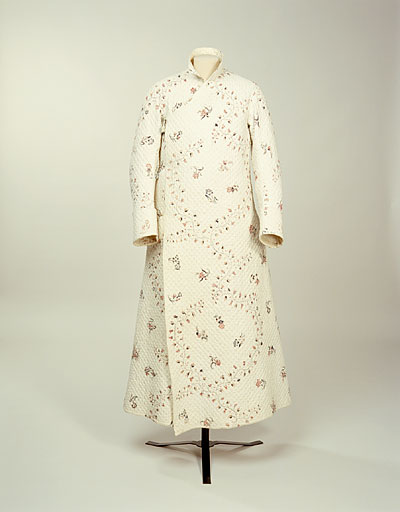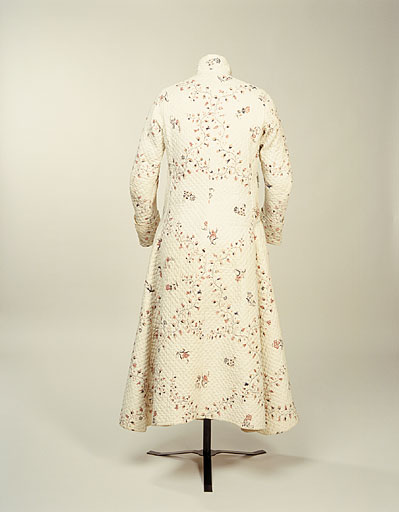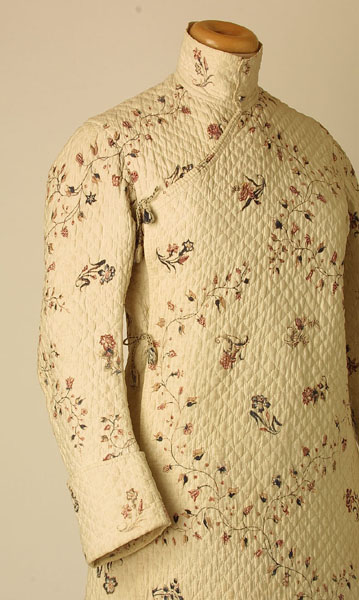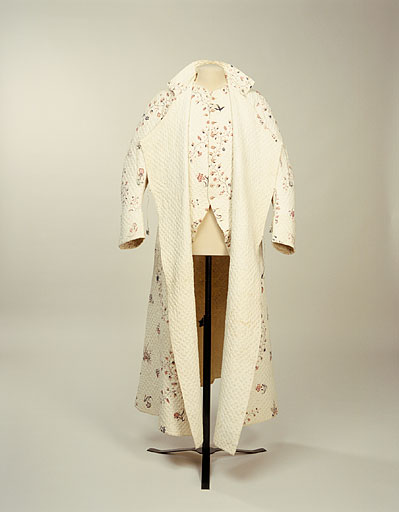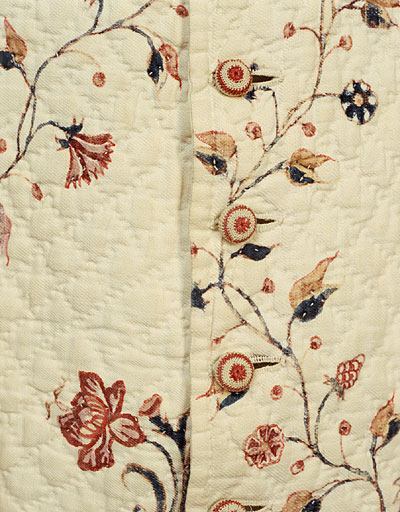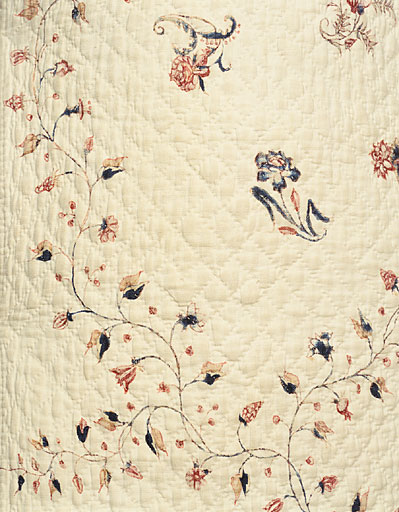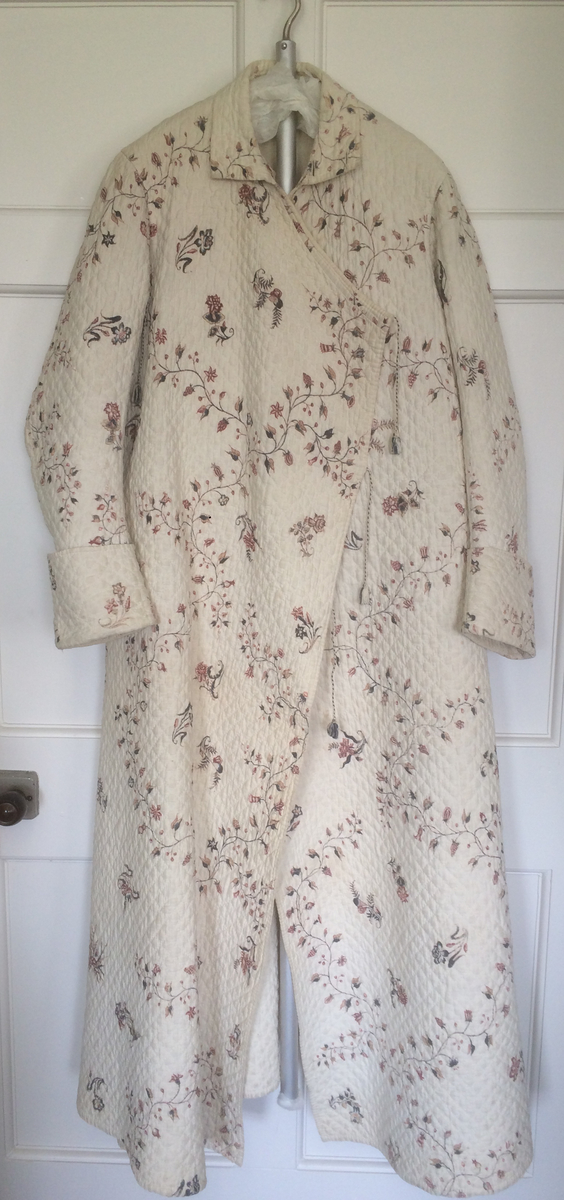gown & banyan
Summary
Hand mordant-painted and resist-printed cotton (hand woven in India), quilted and with attached waistcoat fronts. Cotton, painted with running sprig pattern enclosing small sprays in blue, red and fawn, probably painted in India: quilted, with plain cotton back, four sections, open centre front, sides wrapping over to fasten on opposite side with six tasselled cords, right over left, high standing collar fastened with covered button and buttonhole at neck, sleeves long with deep turn back cuffs, inner waistcoat front sewn to side seams, fastening to neck with twelve buttons, covered in red and white knitted cotton, pocket flaps, no pockets. Reputedly worn by George lll, and presented by him to his Lord Chamberlain's secretary as a perquisite. Imported Indian cottons were increasingly popular, even if banned, during the 1760s, leading to the repeal on this ban in 1774.
Display Label
Block printing is one of the most ancient methods used to print a pattern onto fabric, and it is also one of the simplest, being in essence rather like potato-cut printing with which school children experiment today. The pattern is first cut in relief into a block of wood, and if the design is complicated narrow slips of flattened copper can be added to give a sharper outline. The dye is then spread evenly on the block, which is carefully placed onto the fabric. As the block is usually smaller than the length of fabric, small pins at the corners of the block can be used to line up the patterns, and the marks that the dye can leave on these pins provides evidence that the fabric has been block printed. Block printing by hand could be tortuously slow to undertake. It has been calculated that in order to print a length of calico twenty-eight yards or about thirty metres long, and thirty inches or about a metre wide with three blocks each measuring nine inches (23cms) by five inches (13cms), the printer would have to apply the blocks over 2,000 times! It is therefore hardly surprising that inventors and entrepreneurs sought to find new methods like roller printing to speed up this process, and thus to cheapen the price of the finished fabric. Early block printed linen and cotton, from the 1730s to the 1760s, survives often as linings, as in the three stomachers pictured at the end.
Object Name
gown & banyan
Date Created
1760-1770
Dimensions
Length (whole): 142.5cm
Length (waistcoat): 75cm
accession number
1951.11
Place of creation
England
Medium
Legal
© Manchester Art Gallery

